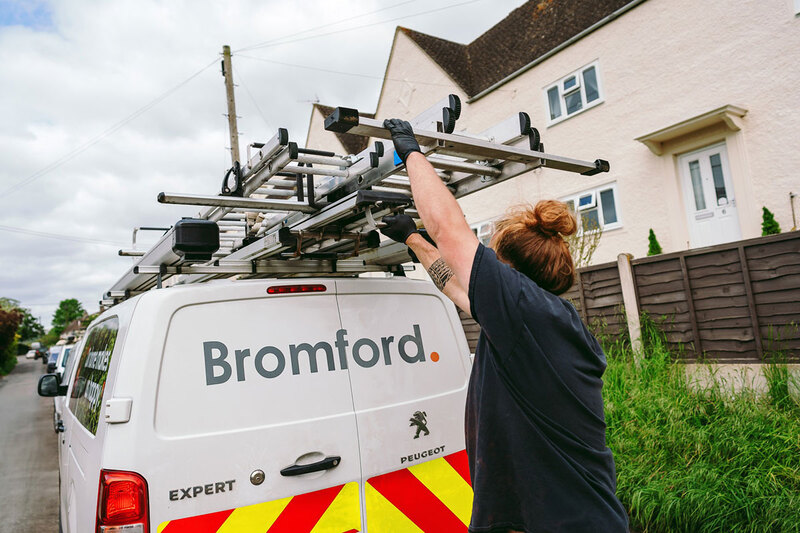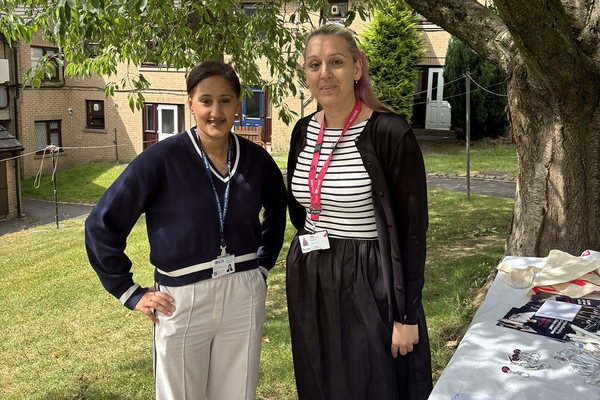How we… improved on-time repairs by 110%
Bromford, part of Bromford Flagship, has improved on-time repairs by 110% in one area of Bristol. Angela Manson, place team leader at the housing association, explains how they did it
Key learnings
- Working across too many geographic areas makes it difficult for staff to build strong relationships with customers and to understand differing local needs
- Conversely, working consistently within the same community allows customer-facing staff to build trust with customers and understand local challenges
- A place-based working model allows repairs challenges to be tackled more effectively, by providing solutions based on local insight
What was the problem?
Bromford launched its first place-based pilot in summer 2024, in Staple Hill, a suburb seven miles from Bristol, which was identified as one of the housing association’s highest areas of demand for repairs.
Before this point, our operating model had customer-facing and support colleagues working across multiple geographic areas, which made it difficult for staff to build strong relationships with customers and to develop a deep understanding of local needs.
As a result, repair services were inconsistent, and performance metrics such as first-time fixes and on-time completions lagged behind our expectations.
What was our solution?
We piloted a place-based working model in Staple Hill, drawing on learning from sectors such as health and local government to design a model that prioritises people, partnerships and places.
As part of the pilot, a group of colleagues was assigned to consistently serve that specific community; neighbourhood coaches and service delivery colleagues were embedded into the area and given autonomy to make decisions based on local insight.
We streamlined operational processes, encouraged collaboration across roles and aligned our services around the needs of Staple Hill.
Internal communications and webinars supported colleague understanding, while governance groups ensured the pilot was well managed and scalable, and the initiative was backed by engagement strategies to support long-term success.
What was the outcome?
Our approach allowed teams to build trust with customers, understand local challenges and respond more effectively.
By February 2025, 80% of repairs in Staple Hill were fixed first time, compared to an average of 64% across the rest of the West of England. Bromford’s on-time repair completions rose from 39% in February 2024 to 82% in February 2025.
These results demonstrate the effectiveness of place-based working in improving both service delivery and customer satisfaction.
Empowering customer-facing colleagues and investing in their development also leads to stronger teamwork, greater efficiency and services shaped directly around the needs of the community.
Twelve months after launching the pilot, we made the decision that the drop in demand was so significant that we no longer needed two full-time engineers in Staple Hill, giving us the opportunity to redeploy that resource elsewhere.
Case study
One example of the benefits of place-based working in Staple Hill has been the upskilling of colleagues to meet local needs more effectively; previously siloed teams are now brought together in all communications regarding this area, so their level of understanding of the local issues is radically improved.
Our day-to-day engineer identified that small issues often required escalation to other teams, which could cause delays in getting them fixed.
Through our place-based model, the team has been able to respond by providing specialist training to upskill engineers. One engineer has now successfully completed his TETRA course, giving him the skills and autonomy to resolve straightforward issues immediately. This helps reduce waiting times, cut down on unnecessary handovers and improve the customer experience.
What were the challenges?
Transitioning from a centralised model to a place-based approach required a cultural shift.
Teams needed clarity on their roles and needed to build up the confidence to make local decisions. We addressed these issues through clear communication, dedicated leadership support, and structured pilots that allowed for learning and adaptation.
Balancing conflicting needs for consistency across areas, as well as local flexibility, was another challenge, which we managed through strong governance and feedback loops.
The key challenge ahead will be the scaling-up of this approach across the wider Bromford Flagship geography – which will ultimately need to support nearly 80 place-based approaches.
Subscribe to Inside Housing Management and sign up to the newsletter

Inside Housing Management is the go-to source for learning, information and ideas for housing managers.
Subscribe here to read the articles.
Already have an account? Click here to manage your newsletters.
Latest stories








